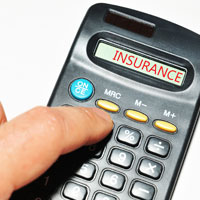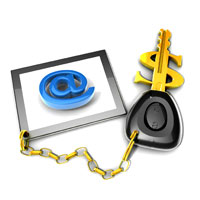9 Discounts Sparks Drivers Overlook when Comparing Auto Insurance on the Web

Purchasing the cheapest Sparks auto insurance over the internet may be intimidating for consumers not familiar with shopping for insurance online. With so many companies in the marketplace, how can anyone effectively compare the different rates to find the lowest price?
If you have car insurance now, you should be able to lower your premiums substantially using this information. The purpose of this article is to tell you how car insurance quotes work and some money-saving tips. Although Nevada car owners do need to know how big insurance companies price insurance differently and apply this information to your search.
Comprehensive Auto Insurance Comparison in Sparks
There are multiple methods to shop for auto insurance, and some are less labor-intensive and much quicker. You can waste a few hours (or days) driving to insurance agencies in Sparks, or you can stay home and use the web to accomplish the same thing much quicker.
Many insurance companies enroll in a system where insurance shoppers complete one form, and at least one company then returns a price quote based on that information. This saves time by eliminating repetitive form submissions for each company.
To find out how much you can save on auto insurance click here to start a free quote.
The only downside to doing it this way is that you can’t choose which companies to get quotes from. So if you want to select specific insurance companies to compare, we put together a list of auto insurance companies in Nevada. View list of Nevada insurance companies.
It doesn’t matter which method you choose, just compare apples-to-apples quote information for every quote you compare. If you use different limits and deductibles on each one it will be very difficult to find the best deal in Sparks. Having just a slight variation in coverages can result in a big premium difference. And when quoting auto insurance, remember that quoting more provides better odds of finding better pricing.
Do you qualify for a discount?
Companies that sell car insurance do not advertise every available discount in an easy-to-find place, so we researched some of the more common as well as the least known savings tricks you should be using.
- Driver Safety – Completing a driver safety course could save 5% or more if you qualify.
- Seat Belts Save – Drivers who require all occupants to buckle their seat belts can save up to 15% off your PIP or medical payments premium.
- Lower Rates for Military – Being on active duty in the military can result in better rates.
- Anti-lock Brake System – Vehicles with anti-lock braking systems can avoid accidents and earn discounts up to 10%.
- 55 and Retired – If you qualify as a senior citizen, you may be able to get a discount up to 10%.
- Federal Employees – Employees or retirees of the government may qualify you for a discount with a few auto insurance companies.
- Claim Free – Drivers who don’t have accidents can save substantially when compared with frequent claim filers.
- Anti-theft Discount – Anti-theft and alarm systems are stolen less frequently and qualify for as much as a 10% discount.
- Homeowners Pay Less – Owning a home in Sparks can help you save on auto insurance because maintaining a house is proof that your finances are in order.
It’s important to note that some of the credits will not apply to the overall cost of the policy. Most only apply to the price of certain insurance coverages like comp or med pay. Just because it seems like it’s possible to get free car insurance, you won’t be that lucky.
Car insurance 101
Knowing the specifics of auto insurance can help you determine appropriate coverage for your vehicles. Policy terminology can be impossible to understand and even agents have difficulty translating policy wording.
Auto collision coverage
Collision insurance pays to fix your vehicle from damage from colliding with a stationary object or other vehicle. You have to pay a deductible and the rest of the damage will be paid by collision coverage.
Collision insurance covers things like sideswiping another vehicle, damaging your car on a curb, sustaining damage from a pot hole and crashing into a building. Collision is rather expensive coverage, so consider dropping it from older vehicles. You can also raise the deductible to bring the cost down.
Uninsured and underinsured coverage
Your UM/UIM coverage protects you and your vehicle from other drivers when they either are underinsured or have no liability coverage at all. Covered losses include injuries sustained by your vehicle’s occupants as well as your vehicle’s damage.
Because many people have only the minimum liability required by law (15/30/10), their limits can quickly be used up. For this reason, having high UM/UIM coverages is a good idea.
Auto liability
This coverage provides protection from damage or injury you incur to a person or their property that is your fault. It protects you from legal claims by others. It does not cover damage sustained by your vehicle in an accident.
Coverage consists of three different limits, per person bodily injury, per accident bodily injury, and a property damage limit. As an example, you may have values of 25/50/25 which means $25,000 bodily injury coverage, a limit of $50,000 in injury protection per accident, and $25,000 of coverage for damaged propery.
Liability insurance covers claims like emergency aid, repair costs for stationary objects and medical services. The amount of liability coverage you purchase is up to you, but it’s cheap coverage so purchase as much as you can afford. Nevada requires drivers to carry at least 15,000/30,000/10,000 but you should think about purchasing more liability than the minimum.
Coverage for medical payments
Coverage for medical payments and/or PIP pay for immediate expenses such as prosthetic devices, dental work and chiropractic care. They are used to fill the gap from your health insurance policy or if you do not have health coverage. It covers all vehicle occupants and will also cover getting struck while a pedestrian. Personal Injury Protection is not universally available but it provides additional coverages not offered by medical payments coverage
Comprehensive coverages
Comprehensive insurance covers damage that is not covered by collision coverage. You first must pay your deductible then your comprehensive coverage will pay.
Comprehensive can pay for claims like hitting a deer, hitting a bird and a tree branch falling on your vehicle. The maximum amount a auto insurance company will pay at claim time is the market value of your vehicle, so if the vehicle’s value is low consider removing comprehensive coverage.
More detailed Nevada auto insurance information can be read at the Nevada Division of Insurance website. Consumers can learn about insurance regulations, read industry bulletins, and find out industry alerts.


